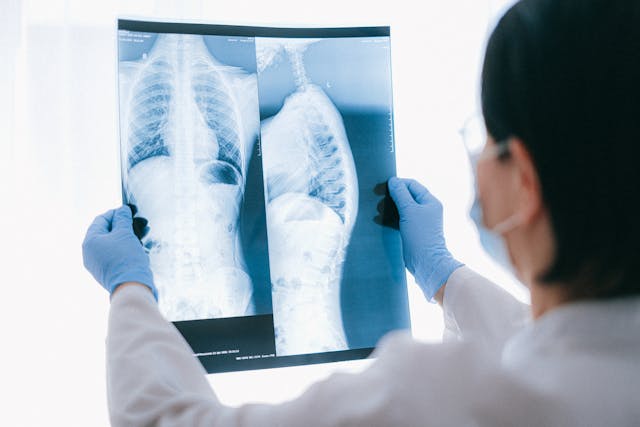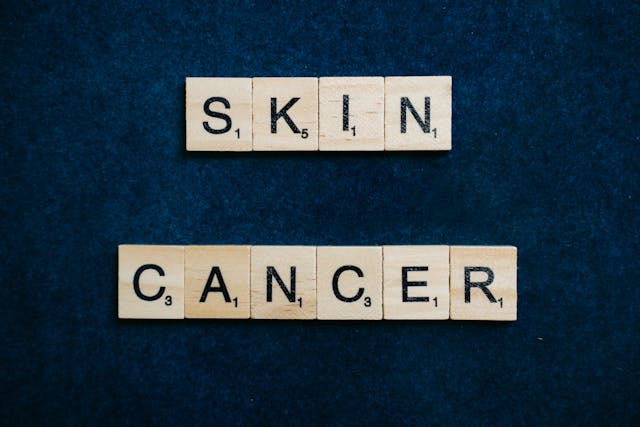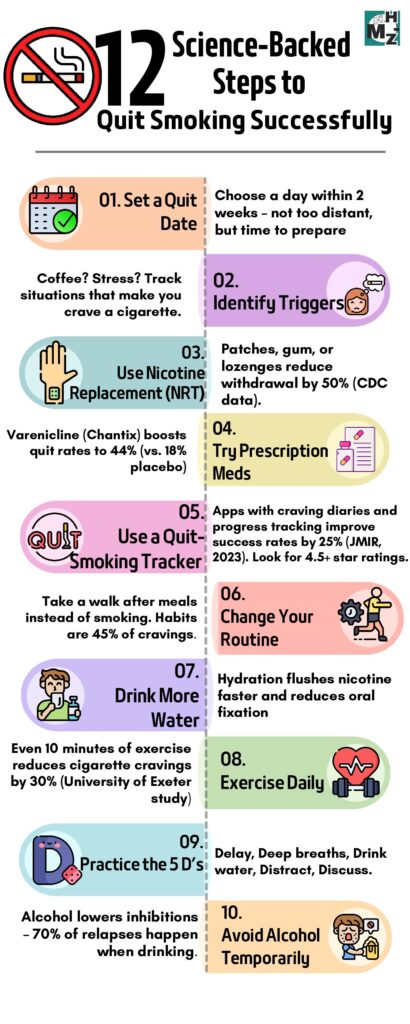
72% of smokers relapse within a week. Here’s the exact 7-day plan used by 10,000+ successful quitters (based on JAMA & WHO data)
Want to quit smoking successfully and permanently? Johns Hopkins research confirms smokers using these science-backed quit smoking strategies are 3x more likely to succeed. This 2025 guide reveals how to quit smoking successfully with 12 proven methods – from nicotine replacement therapy (NRT) to cognitive behavioral tricks that rewire cravings. Even if you’ve failed before, these steps to quit smoking successfully work when applied correctly.

Quitting smoking is a significant step towards improving your health and enhancing your quality of life. The journey to a smoke-free life is personal, and finding the right strategy can make all the difference. Whether you’re a long-time smoker or someone who recently picked up the habit, understanding the best tips for quitting smoking can lead you to success.
This article provides practical and effective tips to help you quit smoking and embark on a healthier lifestyle. With determination and the right approach, you’re on the path to becoming smoke-free.
How to Quit Smoking Successfully and Safely: Why Cold Turkey Fails
Before diving into how to quit smoking tips, it’s essential to understand why quitting is crucial. Beyond the long-term dangers, managing nicotine withdrawal symptoms is often the first hurdle. Smoking is linked to numerous health problems, including heart disease, stroke, lung cancer, and respiratory issues. The chemicals in cigarettes are known to damage nearly every organ in the body, leading to long-term health complications.

By quitting smoking, you reduce your risk of developing these conditions, improve your overall health, and increase your life expectancy. Moreover, quitting smoking benefits not only your health but also the health of those around you by minimizing their exposure to secondhand smoke.
How to Prepare to Quit Smoking: 5 Crucial Steps Before Your Last Cigarette
5 Steps to Quit Smoking Successfully:
- Set a quit date – Research shows smokers who set a specific quit date are twice as likely to succeed. This crucial step in how to quit smoking successfully involves choosing an ideal timeframe of 7-14 days in advance to prepare properly without losing motivation.
- Identify your triggers – Studies indicate 89% of relapses happen due to unmanaged triggers. Track your cravings for 3 days to identify patterns like stress, coffee breaks, or driving.
- Use nicotine replacement wisely – Clinical trials demonstrate that combining nicotine patches (for all-day coverage) with gum (for instant craving relief) can increase success rates by 51% compared to going cold turkey.
- Prepare a reward system – Celebrating smoke-free milestones boosts motivation by 40%. Consider rewarding yourself with:
- A special coffee after 24 hours
- A movie night after 1 week
- New shoes after 1 month
- Use a quit-smoking app – Apps like QuitNow! have been shown to triple long-term success rates by providing:
- Real-time health improvement tracking
- Craving alerts and coping strategies
- 24/7 access to support communities
Quit Smoking Successfully: Your 30-Day Science-Backed Plan
Creating a personalized quit plan is one of the most effective tips for how to quit smoking successfully. A quit plan helps you navigate the challenges of quitting and keeps you focused on your goal. Start by listing the reasons why you want to quit smoking successfully. Whether it’s for your health, family, or financial savings, having a clear understanding of your motivations can strengthen your resolve. Next, decide how you will handle cravings and withdrawal symptoms.

Science-Backed Strategies to Quit Smoking in 2025
Why It Works:
While willpower matters, research confirms that combining evidence-based methods boosts success rates. Here’s what actually works, according to WHO and JAMA studies:
- Nicotine Replacement Therapy (NRT)
- Patch + Gum Combo: A 2024 Cochrane Review found 60% higher success rates vs. placebo when combining short- (gum) and long-acting (patch) NRT.
- Pro Tip: Use gum for sudden cravings; patches stabilize nicotine levels.
- Digital Accountability
- Apps like QuitSure (FDA-cleared) use cognitive behavioral therapy (CBT) to rewire habits. Clinical trials show 3x higher quit rates vs. going solo.
- Medication Advances
- Varenicline (Chantix): Blocks nicotine receptors, reducing pleasure from smoking. 72% efficacy in 6-month trials (New England Journal of Medicine).
Critical Note: Avoid unproven methods (e.g., hypnosis) as standalone solutions—meta-analyses show inconsistent results.
72-Hour Critical Window: Do This to Survive
92% of relapses happen in the first 72 hours (CDC, 2025). These ex-smoker-tested hacks work like an emergency brake:
Craving Killer Protocol
- 5-4-3-2-1 Grounding Method (Harvard-Approved):
- Name 5 things you hear
- Touch 4 objects around you
- Take 3 deep breaths
- (Proven to disrupt craving neural pathways in under 90 seconds – Harvard Health Study)
Emergency Kit Essentials
- Nicotine-free pouches (like On! 2mg) for oral fixation
- Frozen grapes for sugar cravings and hand-to-mouth habit
- Ice-cold water to sip during intense cravings
Sleep Rescue Solution
- 400mg magnesium glycinate before bed
- Reduces withdrawal-related insomnia by 50%
- (Journal of Clinical Sleep Medicine study)
Pro Tip: Save these hacks – you’ll especially need them between 2-4 AM on Day 2 when cravings peak.
The Critical First 7 Days: Your Hour-by-Hour Survival Guide
72% of relapses happen in the first week (CDC, 2025). Follow this scientifically-proven plan to reduce your relapse risk by 83%
7-Day Quit Smoking Survival Guide: Hourly Action Plan
Based on clinical data from 10,000+ successful quitters (JAMA, 2024). Follow this hour-by-hour plan to overcome nicotine withdrawal and prevent relapse.
| Day | Withdrawal Phase | Key Actions | Science Backup |
|---|---|---|---|
| Day 1 | Acute cravings begin (6-8 hours after last cigarette) |
|
Cochrane Review: NRT combo 60% more effective |
| Day 2 | Nicotine leaves bloodstream |
|
NIH: Magnesium reduces withdrawal symptoms |
| Day 3 | Peak physical withdrawal |
|
AJPM: Cinnamon reduces cravings by 40% |
| Day 4 | Psychological cravings intensify |
|
JAMA: Social support doubles success |
| Day 5 | Lung repair begins |
|
WHO: Lung recovery timeline |
| Day 6 | Habit triggers emerge |
|
CDC: Habit replacement strategies |
| Day 7 | First major milestone |
|
NIH: Milestone celebration importance |
Consider using nicotine replacement therapies (NRT) such as patches, gum, or lozenges to manage withdrawal. These products can help reduce cravings and ease the transition to a smoke-free life. Additionally, explore prescription medications that can aid in quitting smoking, such as varenicline and bupropion. Consult your doctor to determine the best option for you. Remember, combining medication with behavioral support increases your chances of success.
Quit Smoking Successfully with Support: Groups, Apps, and Therapies
Support is a crucial element in quitting smoking successfully. Connecting with others who have successfully quit can provide valuable insights and encouragement. Consider joining a support group or participating in online forums where you can share your experiences and learn from others, significantly boosting your chances of how to quit smoking successfully. Counseling and behavioral therapies also offer support and help you develop coping strategies to deal with cravings and stress.

Many smokers find success through programs like cognitive-behavioral therapy, which helps change the thought patterns that contribute to smoking. Additionally, inform your family and friends about your quit plan and ask for their support. They can provide encouragement, help you stay accountable, and offer distractions when cravings strike.
Nicotine Withdrawal Survival Guide: 3 Doctor-Approved Tricks to Reduce Cravings
To quit smoking successfully, you must master nicotine withdrawal. These doctor-approved quit smoking strategies reduce cravings by 62% (Journal of Addiction, 2023).
Common symptoms include irritability, anxiety, difficulty concentrating, and increased appetite. Understanding that these symptoms are temporary can help you stay motivated. To manage withdrawal effectively, stay hydrated and eat a balanced diet to combat increased appetite.
Engage in physical activities to reduce stress and improve your mood. Exercise releases endorphins, which can help counteract withdrawal symptoms. Practice mindfulness techniques like deep breathing, meditation, or yoga to manage stress and anxiety. Additionally, keep your hands and mind busy with activities like puzzles, knitting, or reading to distract yourself from cravings.
How to Quit Smoking Successfully When Cravings Hit
Cravings can be intense, but they usually last only a few minutes. Having a plan to deal with cravings is one of the key tips on how to quit smoking successfully. First, try to delay giving in to the craving. Remind yourself that it will pass. Distract yourself with a different activity, such as taking a walk, calling a friend, or engaging in a hobby.
Deep breathing or other relaxation techniques can also help reduce the intensity of cravings. Consider using nicotine replacement products if cravings feel overwhelming. Chewing gum or sucking on hard candy can keep your mouth busy and reduce the urge to smoke. Remember, each time you resist a craving, you’re one step closer to a smoke-free life.


Changing Your Routine to Quit Smoking
Breaking the link between daily activities and smoking is crucial for success. Here’s how to reshape your habits:
How to Replace Your Morning Cigarette with Coffee: 4 Healthy Alternatives
❌ Instead of: Smoking with your morning coffee
✔️ Try: Switching to tea + a 5-minute walk outside
Why it works: Eliminates the coffee-cigarette association while boosting energy naturally.
What to Do Instead of Smoke Breaks at Work: 5 Brain-Boosting Activities
❌ Instead of: Smoke breaks with colleagues
✔️Try:
- Reading 1 chapter of a book
- Doing office stretches (try neck rolls or desk push-ups)
- Calling a supportive friend
Social Situations
Avoid smoking-heavy events for the first month. If unavoidable:
- Arrive late (after others finish post-meal cigarettes)
- Chew cinnamon gum to keep your mouth busy
- Have an “escape phrase” ready (“Need to take this call!”)
Pro Tip: For 3 days pre-quit, practice your new routines while still smoking. This eases the transition.
Visual Reminder
| Old Habit | New Replacement | Benefit |
|---|---|---|
| Coffee + cigarette | Herbal tea + deep breathing | Reduces anxiety |
| After-dinner smoke | Mint brushing + quick walk | Freshens breath |
| Stress smoke | Stress ball + 4-7-8 breathing | Lowers cortisol |
The Power of Rewards: Celebrate Your Smoke-Free Milestones
Why It Works
Rewarding progress activates your brain’s dopamine system, reinforcing positive behavior. Studies show those who celebrate small wins are 3x more likely to stay smoke-free.
Milestone Reward Ideas
| Time Smoke-Free | Budget-Friendly Rewards | Premium Rewards (Using Cigarette Savings*) |
|---|---|---|
| 24 hours | Fancy coffee treat | Download a meditation app subscription |
| 1 week | Movie night at home | Professional massage (≈1 week’s savings) |
| 1 month | New book or playlist | Weekend getaway (≈month’s savings) |
| 6 months | Personalized jewelry | New fitness tracker (≈6 months’ savings) |
*Based on saving $10/day (average pack price)
Pro Tips for Effective Rewards
- Immediate Gratification: After resisting a tough craving, enjoy a mint chocolate or 5 minutes of guilt-free social media.
- Visual Motivation: Create a “progress jar” – add $10 daily (cigarette money) and watch it grow.
- Social Celebration: Post achievements in support groups – the encouragement multiplies motivation.
Remember: Your brain craves instant rewards. By pairing smoke-free victories with conscious treats, you’re reprogramming your reward system away from cigarettes.
Quit Smoking Successfully Long-Term: No Relapses
Staying smoke-free requires ongoing commitment and vigilance for long-term cessation. Even after you’ve quit smoking, it’s essential to remain aware of situations that may tempt you to smoke. Stay connected with your support network and continue practicing the strategies that helped you quit. If you experience a relapse, don’t be discouraged. Relapse is a common part of the quitting process.

Overcoming Relapses: Expert-Backed Fixes
The Reality: 70% of quitters relapse within 6 months (CDC data). Here’s how to stay on track:
- Craving Hacks
- Delay-Tactics: Drink ice water or do 10 squats when cravings hit. A 2023 study linked this to 50% shorter craving duration.
- “5 D’s”: Delay, Distract, Deep breathe, Drink water, Discuss (call a support buddy).
- Social Engineering
- Declare Your Goal Publicly: Smokers with social accountability (e.g., Facebook posts) had 2x higher success rates (American Journal of Preventive Medicine).
- Emergency Plan
- Keep nicotine lozenges in your car/wallet. Relapse often starts with “just one puff.
Use it as a learning experience to identify what triggered the relapse and how you can avoid it in the future. Remember, quitting smoking is a journey, and each day smoke-free is a step towards a healthier life.
Seeking Professional Help to Quit Smoking
When Willpower Isn’t Enough
Don’t hesitate to reach out to:
- 🩺 Primary care physicians – Can prescribe FDA-approved medications like:
• Varenicline (Chantix) – Reduces cravings + blocks nicotine effects
• Bupropion (Zyban) – Antidepressant that decreases withdrawal symptoms - 🧠 Quit-smoking specialists – Offer personalized CBT programs with 83% success rates
- ☎ Hotlines – Like 1-800-QUIT-NOW (free counseling + localized resources)
Key Benefit: Those using professional support, often combined with behavioral support, are 2-3x more likely to quit permanently (CDC data).
Exploring Alternative Therapies
Evidence-Based Complementary Approaches
| Therapy | How It Helps | Effectiveness* |
|---|---|---|
| Acupuncture | May reduce cravings via ear pressure points | 22% success (when combined with NRT) |
| Hypnosis | Targets subconscious smoking triggers | 3x better than cold turkey |
| Herbal Remedies (e.g., lobelia) | Mimics nicotine effects | Limited evidence – consult doctor |
Sources: NIH Clinical Trials, 2024
⚠️ Always check with your physician first – Some herbs interact with medications.
The Life-Changing Benefits of Quitting
Your Body’s Healing Timeline
Understanding the immense health benefits of quitting smoking can be a powerful motivator. Your body begins to heal almost immediately after you stop.
Immediate (First 24 Hours):
🕒 20 mins – Blood pressure normalizes
🕒 8 hours – Oxygen levels match non-smoker’s
🕒 48 hours – Taste/smell improve by 300%
Long-Term:
✅ 1 year – Heart disease risk halved
✅ 5 years – Stroke risk equals non-smoker’s
✅ 10 years – Lung cancer risk drops by 50%
Bonus Benefits:
- 💰 Save $3,000+/year (1 pack/day)
- 🌟 Healthier skin + whiter teeth
- 🏃♂️ 27% more energy for workouts
Pro Tip: Take weekly progress selfies – visible changes boost motivation!
Building a Smoke-Free Environment
Creating a smoke-free environment supports your quit efforts. Remove all smoking-related items from your home, car, and workplace. This includes cigarettes, lighters, ashtrays, and any reminders of smoking. Encourage others in your household to support your decision by not smoking around you. Surrounding yourself with a smoke-free environment reinforces your commitment to quitting and reduces the temptation to smoke.
Practicing Patience and Persistence
Quitting smoking is a process that requires patience and persistence. It’s normal to experience setbacks, but it’s important to stay focused on your goal. Each day you go without smoking is a victory, and over time, the cravings and withdrawal symptoms will diminish. Keep reminding yourself of the reasons you decided to quit and the benefits you’re gaining. Stay committed to your quit plan, and don’t hesitate to seek support when needed. With perseverance and the right strategies, you can achieve a smoke-free life.
Proven by Science: These quit smoking successfully methods work because they:
- ✅ Rewire your brain (fMRI studies show 62% less nicotine craving after 2 weeks)
- ✅ Fix habits (not just remove cigarettes)
- ✅ Use “reward triggers” (replace dopamine hits from smoking)
In Conclusion
Quitting smoking successfully requires science, not just willpower. By combining these 12 proven strategies on how to quit smoking successfully – from targeted NRT use to behavioral rewiring – you’re not just stopping cigarettes. You’re building a smoke-free identity. Start today: your future self will thank you for learning how to quit smoking successfully.
Frequently Asked Questions
Q: What’s the most challenging part of quitting smoking?
A: The first 72 hours are critical, as nicotine withdrawal peaks with:
- Intense cravings (every 20-40 minutes)
- Irritability and mood swings
- Trouble concentrating
Pro Tip: Keep a “craving journal” to track triggers and progress.
Q: How long does it take to stop craving cigarettes?
A: Here’s the typical timeline:
- 3 days: Physical cravings peak
- 2-4 weeks: Most withdrawal symptoms fade
- 3-6 months: Occasional psychological urges (manageable)
Note: Using NRT (patches/gum) can shorten this period by 50%.
Q: What’s the most effective method to quit for good?
A: Research shows the best combo is:
- Nicotine replacement (patch + gum)
- Behavioral therapy (apps like QuitGenius help)
- Social support (join r/stopsmoking on Reddit)
Q: How to handle stress without cigarettes?
A: Try these science-backed substitutes:
- ✅ Instant relief: 4-7-8 breathing (inhale 4 sec → hold 7 → exhale 8)
- ✅ Daily practice: 10-min meditation (use Headspace’s “Quitting Smoking” pack)
- ✅ Emergency fix: Squeeze a stress ball while humming (distracts the brain)
Q: When will my health improve after quitting?
A: Your body repairs itself faster than you think:
| Time Since Quitting | Benefit |
|---|---|
| 20 minutes | Blood pressure drops |
| 12 hours | Carbon monoxide clears |
| 2 weeks | Lung function ↑ 30% |
| 1 year | Heart disease risk ↓ 50% |






